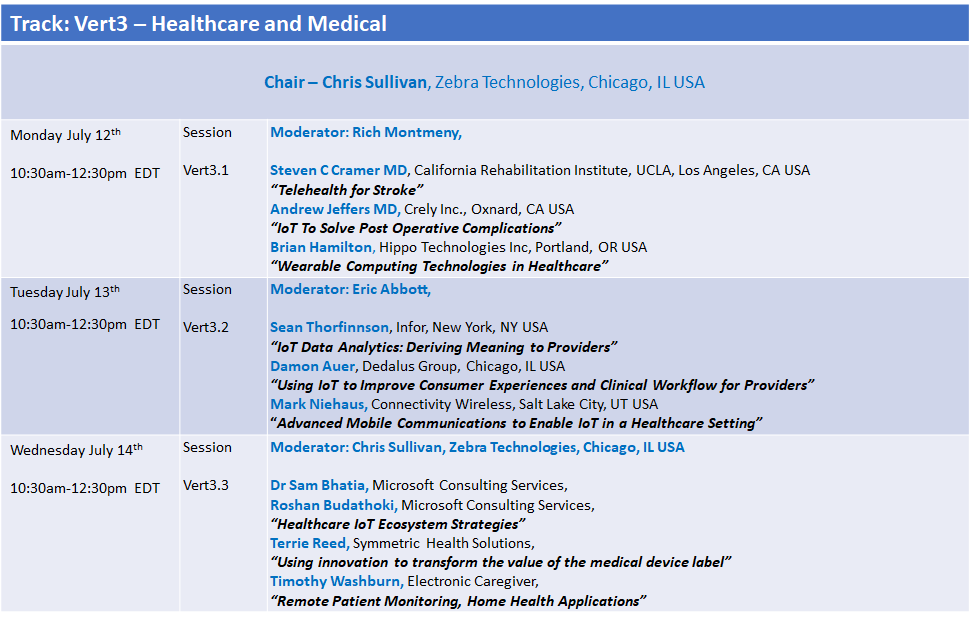
Description
Internet of Things (IoT) is rapidly evolving in healthcare. Up to 85 percent of health care providers and systems are utilizing IoT. This technology is used to connect MedTech products to healthcare networks and to EHR systems.
Consumerism is driving health, and consumers have adopted a variety of wearable devices and apps that help them monitor their activity, sleep patterns, heart rate, and other metrics. Physicians, hospitals and providers can also monitor patients’ health continuously using wearables and telehealth technology. IoT is used to streamline and bridge the technologies leading to improved patient health outcomes, patient’s safety, patient’s engagement and satisfaction with care. IoT is utilized through all the stages of data collection from these technologies, leading to analytics by leveraging all the collected data in order to better manage health and improve outcomes. Predictive and prescriptive analytics will result in faster diagnosis, better treatment recommendations and overall decrease in medication and treatment errors. IoT is also important to control hospital and healthcare facilities environments including power plants, communication, supply chain, and other operations resulting in improvements in efficiency, decrease in infections, decrease in costs and improvements in patients’ satisfaction and outcomes.
In the world forum IEEE IoT healthcare vertical track, we will be discussing how hospitals, health systems, and health providers are leveraging IoT technologies towards improving patients’ engagements, and outcomes. Case studies of Telehealth technology will be discussed in detail, in addition, case studies of utilizing wearables and other technologies towards improving patient outcomes and satisfaction with care will be discussed.
Track Chair
Chris Sullivan— Global Healthcare Practice Lead, Zebra Technologies
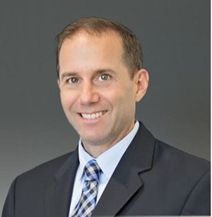 With an acute understanding of the needs of patients and their caregivers coupled with robust technical knowledge of healthcare operations, Chris artfully combines the personal and professional needs of the industry to create an inspirational point of view on healthcare technology. His voice is friendly and conversational, while referring to his impressive experience of being a sought after industry speaker, healthcare provider and industry association board member, U.S policy advocate and to reinforce his authority position.
With an acute understanding of the needs of patients and their caregivers coupled with robust technical knowledge of healthcare operations, Chris artfully combines the personal and professional needs of the industry to create an inspirational point of view on healthcare technology. His voice is friendly and conversational, while referring to his impressive experience of being a sought after industry speaker, healthcare provider and industry association board member, U.S policy advocate and to reinforce his authority position.
Track Co-Chairs – Healthcare Provider Strategies: Session 1
Richard Montmeny, PhD, PT, Chief Executive Officer, California Rehabilitation Institute, Los Angeles Ca. USA
 With nearly 35 years of experience, Richard is a results-driven leader who has held senior management positions in diverse settings from large academic health care organizations to community hospitals. Most recently, he served as chief operating officer and site administrator at Dignity Health-owned Saint John’s Pleasant Valley Hospital, a 155-bed facility and sub-acute unit in Camarillo, CA. Before that, Richard was assistant vice president of musculoskeletal services for six years at Wentworth-Douglass Health System in Dover, NH where he led double digit growth of the service line. Earlier in his career, Richard was with University of North Carolina (UNC) Chapel Hill and UNC Healthcare serving as director of faculty clinics and assistant professor of UNC’s School of Physical Therapy. He also co-founded and owned a multi-site outpatient private practice in Connecticut, treating patients throughout the greater New England region.
With nearly 35 years of experience, Richard is a results-driven leader who has held senior management positions in diverse settings from large academic health care organizations to community hospitals. Most recently, he served as chief operating officer and site administrator at Dignity Health-owned Saint John’s Pleasant Valley Hospital, a 155-bed facility and sub-acute unit in Camarillo, CA. Before that, Richard was assistant vice president of musculoskeletal services for six years at Wentworth-Douglass Health System in Dover, NH where he led double digit growth of the service line. Earlier in his career, Richard was with University of North Carolina (UNC) Chapel Hill and UNC Healthcare serving as director of faculty clinics and assistant professor of UNC’s School of Physical Therapy. He also co-founded and owned a multi-site outpatient private practice in Connecticut, treating patients throughout the greater New England region.
Richard holds a PhD in Kinesiology from the University of Connecticut, a master’s in special education from the University of Pennsylvania and a bachelor’s of science in physical education from Central Connecticut State University. In addition, Richard completed the Harvard Business School General Management Program. He sits on several boards including Ventura County MediCal Management Care Commission, Camarillo Chamber of Commerce and is a member of the American College of Healthcare Executives.
Talk # 1
Steven Cramer, MD
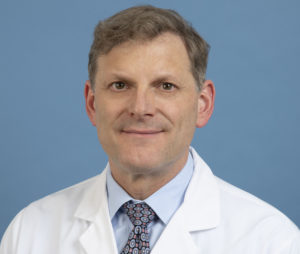 Dr. Steven C. Cramer is a Professor of Neurology at the University of California, Los Angeles. He is also the Director of Research at California Rehabilitation Institute, co-PI of the NIH StrokeNet clinical trials network, Associate Editor at Neurorehabilitation and Neural Repair, and a Section Editor at the journal Stroke. Dr. Cramer graduated with Highest Honors from University of California, Berkeley; received his medical degree from University of Southern California; did a residency in internal medicine at UCLA; and did a residency in neurology plus a fellowship in cerebrovascular disease at Massachusetts General Hospital. He also earned a Masters Degree in Clinical Investigation from Harvard Medical School.
Dr. Steven C. Cramer is a Professor of Neurology at the University of California, Los Angeles. He is also the Director of Research at California Rehabilitation Institute, co-PI of the NIH StrokeNet clinical trials network, Associate Editor at Neurorehabilitation and Neural Repair, and a Section Editor at the journal Stroke. Dr. Cramer graduated with Highest Honors from University of California, Berkeley; received his medical degree from University of Southern California; did a residency in internal medicine at UCLA; and did a residency in neurology plus a fellowship in cerebrovascular disease at Massachusetts General Hospital. He also earned a Masters Degree in Clinical Investigation from Harvard Medical School.
His research focuses on neural repair after central nervous system injury in humans, with an emphasis on stroke and on recovery of movement. Treatments examined include robotics, cellular therapies, a monoclonal antibody, brain stimulation, drugs, and telehealth methods. A major emphasis is on translating new drugs and devices to reduce disability after stroke, and on developing biomarkers to individualize therapy for each person’s needs. Dr. Cramer has received the Stroke Rehabilitation Award from the American Heart Association, the Barbro B. Johansson Award in Stroke Recovery from the World Stroke Organization, the Award for Excellence in Post-Acute Stroke Rehabilitation from the American Congress of Rehabilitation Medicine, and he holds the Susan and David Wilstein Endowed Chair in Rehabilitation Medicine. He also co-edited the book “Brain Repair after Stroke”, and is the author of over 300 manuscripts.
Talk # 2
Andrew Jeffers, MD
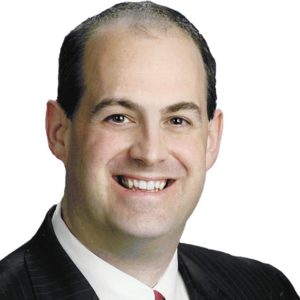
Andrew is an orthopedic surgeon practicing in Southern California. His career started as a clinical instructor at the University of Michigan where he taught Orthopaedic residents. In addition, he held a dual appointment as the Chief of Orthopedic Surgery of the Ann Arbor VA Hospital. He then joined a large private practice orthopedic surgery group in the LA area. However, he soon found his true calling in solo private practice where he focuseson joint replacement and cutting – edge care for knees, hips and shoulders.
Prior to joining Crely, Andrew was well aware of the significant costs to both the patients and to society of surgical site infections. He has been instrumental in guiding the focus of Crely to quickly and reliably identify the infections. With his practical yet creative nature, he has provided the medical background necessary to generate novel yet realistic solutions to the problem of early surgical site infection. Andrew has always enjoyed looking for better and more efficient ways of solving problems. To that end, he has designed his own surgical equipment that is currently used in hip replacement surgery. He looks forward to using the same spark of ingenuity with Crely.
He has also enjoyed the respect of his peers. After a successful term as the Chief of Surgery, he served as the President of the Medical Staff of his local hospital system. In addition, he was elected Physician of the Year. Hecontinues to serve on hospital committees and it is currently the Medial Director of the St. John’s Orthopedic Institute which is tasked to improve the outcomes of patients undergoing total joint surgery.
Andrew enjoys spending time with his family and stays true to his Midwest roots by fiercely rooting for Universityof Michigan in all sporting endeavors.
Arun Sethuraman
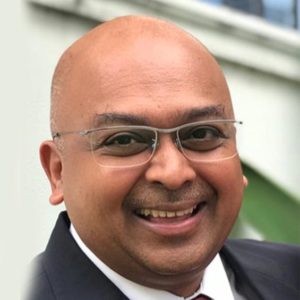 Arun Sethuraman founded Crely in 2017 with a mission to reduce surgical site infection rates after surgery, and to improve health outcomes and patient experience.
Arun Sethuraman founded Crely in 2017 with a mission to reduce surgical site infection rates after surgery, and to improve health outcomes and patient experience.
Timely detection of a surgical site infection is a big challenge for the clinician. Crely is an early stage MedTech company that provides clinical diagnostic solutions to predict and reduce postoperative surgical site infections.
Prior to Crely, Arun served as Vice President, Group Information Officer – International at Stryker Corporation, where he set up the organization, and led the transformation of technology services for all markets outside of the United States. Through smart integrations with hospitals and other value chain partners, Arun helped to build a patientfocused, connected ecosystem that enabled Stryker as easy to do business with. He also championed the setting up of AsiaPacific MedTech CIO roundtable under the APACMed umbrella to bring CIOs together to collaborate on industry-wide issues and opportunities.
Arun held multiple global roles with Merck KGaA group, at the intersection of business process transformation, information technology and M&A integration. He also won a global leadership award for an innovative approach to improve the quality of life for Multiple Sclerosis patients using digital health solutions. Arun has also held business and technology leadership roles at Nike and General Motors Corporation in the areas of manufacturing, e-commerce, supply chain, marketing and retail management.
Arun holds a Bachelor of Engineering in Electronics & Telecommunication and a post-graduate diploma in Business Administration. He is an alumnus of Harvard Business School’s General Management Program.
Arun is an avid traveler and lives in Singapore and Boston, MA. He is passionate about serving the community, and has been associated with Greater Boston Food Bank, The Hindu Centre, Singapore and HBS Alumni mentoring programs.
Talk # 3
Brian Hamilton
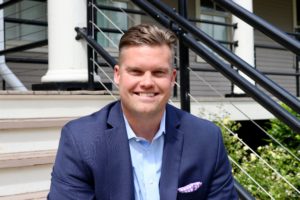 A recognized pioneer and leader in market acceptance and in the deployment of Internet of Things, augmented and virtual reality (AR and VR), and wearable computing technologies in healthcare, education, automotive, consumer packaged goods, oil and gas, power and utilities, transportation and logistics, IT and telecom, industrial manufacturing and entertainment verticals. Brian most recently was co-founder and Chief Business / Revenue Officer for RealWear Inc., which developed the HMT-1®, a ruggedized head-mounted wearable Android tablet for industry. While in this leadership role, Brian established a global sales force, ISV partner and channel reseller network and successfully drove product adoption in over 57 countries growing RealWear from concept stage to the world leader in market share in industrial wearables. While in this role at RealWear the organization grew from four to over 130 employees, established two domestic and five international offices and raised more than $100 million in capital. Previously Brian served as Vice President of Sales and Business Development at DAQRI which raised over $140 million in capital from venture and family offices and which pioneered the commercialization of Augmented Reality. Brian has also been involved in pioneering VR technology in the field of sports simulation and was a co-founder of a micro-transaction platform connecting commerce and celebrities which was privately sold in 2011. Brian began his career with Siemens Medical and comes from a family dedicated to medicine. One of his first jobs in high school was pushing a cart at The Johns Hopkins Hospital in Baltimore, Maryland, in Surgical Pathology. Brian graduated from The University of Rochester with a BA in Economics and Anthropology and holds a Business Certificate of Management from The Simon School of Business. He also holds an MBA and MS in Information Science from Penn State University. Brian is married with three children and is involved in a variety of philanthropic initiatives.
A recognized pioneer and leader in market acceptance and in the deployment of Internet of Things, augmented and virtual reality (AR and VR), and wearable computing technologies in healthcare, education, automotive, consumer packaged goods, oil and gas, power and utilities, transportation and logistics, IT and telecom, industrial manufacturing and entertainment verticals. Brian most recently was co-founder and Chief Business / Revenue Officer for RealWear Inc., which developed the HMT-1®, a ruggedized head-mounted wearable Android tablet for industry. While in this leadership role, Brian established a global sales force, ISV partner and channel reseller network and successfully drove product adoption in over 57 countries growing RealWear from concept stage to the world leader in market share in industrial wearables. While in this role at RealWear the organization grew from four to over 130 employees, established two domestic and five international offices and raised more than $100 million in capital. Previously Brian served as Vice President of Sales and Business Development at DAQRI which raised over $140 million in capital from venture and family offices and which pioneered the commercialization of Augmented Reality. Brian has also been involved in pioneering VR technology in the field of sports simulation and was a co-founder of a micro-transaction platform connecting commerce and celebrities which was privately sold in 2011. Brian began his career with Siemens Medical and comes from a family dedicated to medicine. One of his first jobs in high school was pushing a cart at The Johns Hopkins Hospital in Baltimore, Maryland, in Surgical Pathology. Brian graduated from The University of Rochester with a BA in Economics and Anthropology and holds a Business Certificate of Management from The Simon School of Business. He also holds an MBA and MS in Information Science from Penn State University. Brian is married with three children and is involved in a variety of philanthropic initiatives.
Session 2: Track Co-Chair – Next Generation Healthcare Solutions
Eric Abbott, Chief Product Officer, A4M, and Executive Advisor, Stealth Mode Company
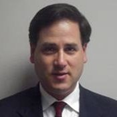 Eric is a senior technology executive in the healthcare and wireless mobility domains, directing and leading large, complex, global initiatives with multi-million dollar P&L responsibility to drive value creation and growth strategies to achieve meaningful outcomes. He has launched over 30 new products and services while serving in a variety of leadership roles at Fortune 100 and startup organizations. He leads by example as Adjunct Faculty, Northwestern University, teaching Consumer Digital Health, is well published, and holds two patents. His current venture recently completed clinical trials for the U.S. Army
Eric is a senior technology executive in the healthcare and wireless mobility domains, directing and leading large, complex, global initiatives with multi-million dollar P&L responsibility to drive value creation and growth strategies to achieve meaningful outcomes. He has launched over 30 new products and services while serving in a variety of leadership roles at Fortune 100 and startup organizations. He leads by example as Adjunct Faculty, Northwestern University, teaching Consumer Digital Health, is well published, and holds two patents. His current venture recently completed clinical trials for the U.S. Army
Talk 1 – Using IoT to Improve Consumer Experiences and Clinical Workflows for Providers
Damon Auer, Chief Executive & Managing Director, North America at Dedalus Group
 Damon is Chief Executive and Managing Director of Dedalus’ healthcare and diagnostic operations in North America, leading digital transformation initiatives at Providers. His prior experience includes Founder and Partner roles at Tribridge and Navint Consulting
Damon is Chief Executive and Managing Director of Dedalus’ healthcare and diagnostic operations in North America, leading digital transformation initiatives at Providers. His prior experience includes Founder and Partner roles at Tribridge and Navint Consulting
In this session, Damon will discuss strategic opportunities to improve patient experiences and clinical workflows using various IoT technologiesand processes to give greater situational awareness of people and things as well as discuss opportunities to create better orchestration of workflows
Talk 2 – Advanced Mobile Communications to Enable IoT in a Healthcare setting
Mark Niehus, RCDD (Area VP – Sales)
 Mark brings more than 25 years of ICT experience in wired and wireless telecom to CWS’s sales team, with a proven ability to gain access and build trust at the executive level.
Mark brings more than 25 years of ICT experience in wired and wireless telecom to CWS’s sales team, with a proven ability to gain access and build trust at the executive level.
As Area VP, he manages all South Central business development including enterprise and 3PO accounts, while providing customers and building owners with innovative solutions. Mark is skilled at customer acquisition, needs analysis, problem solving and developing and executing complex technology agreements. Prior to his role at Connectivity Wireless, Mark owned and operated his own manufacturer representative business for 12+ years as well as working for several other technology firms. Mark has a BA from the University of Iowa, an MBA from the University of Phoenix, and has been an RCDD since 1997
Talk 3 – IoT Data Analytics: Deriving Meaning for Providers
Sean Thorfinnson – Senior Director, Infor
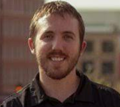 Sean has been working in RTLS healthcare software since 2014. He currently leads the Support & Services Operations team for Location Based Intelligence, an Infor product. Sean has years of experience in RTLS deployment & supportability across numerous different hardware and software technologies. He gained his degree in Computer Science from the University of North Dakota. In his off-time Sean enjoys learning about green energy and machine learning & spending time outdoors
Sean has been working in RTLS healthcare software since 2014. He currently leads the Support & Services Operations team for Location Based Intelligence, an Infor product. Sean has years of experience in RTLS deployment & supportability across numerous different hardware and software technologies. He gained his degree in Computer Science from the University of North Dakota. In his off-time Sean enjoys learning about green energy and machine learning & spending time outdoors
In this session, Sean will describe how the location based intelligence is enabling new standards of operations in healthcare. IoT in combination with analytics, ML, and AI is a powerful combination to provide meaning and understanding to executives and administrators drive better operational insights as it relates to human and system behaviors, facility performance and optimization, security, potential failures and maintenance recommendations.
Session 3 – Track Chair: Healthcare Ecosystem Insights and Opportunties
Chris Sullivan— Global Healthcare Practice Lead, Zebra Technologies
 With an acute understanding of the needs of patients and their caregivers coupled with robust technical knowledge of healthcare operations, Chris artfully combines the personal and professional needs of the industry to create an inspirational point of view on healthcare technology. His voice is friendly and conversational, while referring to his impressive experience of being a sought after industry speaker, healthcare provider and industry board member, U.S policy advocate and to reinforce his authority position.
With an acute understanding of the needs of patients and their caregivers coupled with robust technical knowledge of healthcare operations, Chris artfully combines the personal and professional needs of the industry to create an inspirational point of view on healthcare technology. His voice is friendly and conversational, while referring to his impressive experience of being a sought after industry speaker, healthcare provider and industry board member, U.S policy advocate and to reinforce his authority position.
Talk 1 – Healthcare IoT Ecosystem Strategies
Chris Regan – Director of Digital Health Innovation Strategy, Microsoft
Roshan Budathoki Solution Architect at Microsoft Consulting Services
 Chris Regan is a Digital Advisor in Microsoft’s Office of the CTO. Chris has over thirty years of experience in innovating, planning, and enabling organizations and people through business and technology consulting. Chris brings both deep technical and business expertise from programs across a variety of Healthcare and Life Science organizations and supporting industries. Chris has spent the last nine years with Microsoft Services leading enablement and innovation teams and organizations. Prior to that, Chris spent 7 years as a manager and strategist for Microsoft Business Solutions / Dynamics Solutions.
Chris Regan is a Digital Advisor in Microsoft’s Office of the CTO. Chris has over thirty years of experience in innovating, planning, and enabling organizations and people through business and technology consulting. Chris brings both deep technical and business expertise from programs across a variety of Healthcare and Life Science organizations and supporting industries. Chris has spent the last nine years with Microsoft Services leading enablement and innovation teams and organizations. Prior to that, Chris spent 7 years as a manager and strategist for Microsoft Business Solutions / Dynamics Solutions.
 Roshan is Cloud Data Solution Architect for Microsoft Health and Life Sciences team and in this role helps health industry organizations establish their digital transformation journey and to achieve sustainable ecosystem development success.
Roshan is Cloud Data Solution Architect for Microsoft Health and Life Sciences team and in this role helps health industry organizations establish their digital transformation journey and to achieve sustainable ecosystem development success.
Cloud Data Solution Architect for Microsoft Health and Life Sciences team helping health industry customers to drive their digital transformation journey using Azure Cloud Solutions as cloud data experts.
Talk # 2 – Using innovation to transform the value of the medical device label
Terrie Reed – Director Partner Relationships, Symmetric Health Solutions. Former Associate Director Informatics at the Food and Drug Administration (FDA)
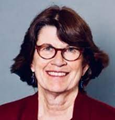 Unique Device Identification (UDI) is intended to bring to the medical device industry what has been possible in the retail industry for over 45 years – scanning the device to unlock clear and accurate product information to drive decision making. While health systems are relying on the UDI more than ever before, challenges remain in linking the data on the device label to data stored in FDA’s public data AccessGUDID. This session explores a new way of looking at the device through the application of OCR, artificial intelligence and neural networks. Examples of existing challenges with UDI scanning and how applying these tools can overcome these challenges to achieve the benefits of a Global UDI system.
Unique Device Identification (UDI) is intended to bring to the medical device industry what has been possible in the retail industry for over 45 years – scanning the device to unlock clear and accurate product information to drive decision making. While health systems are relying on the UDI more than ever before, challenges remain in linking the data on the device label to data stored in FDA’s public data AccessGUDID. This session explores a new way of looking at the device through the application of OCR, artificial intelligence and neural networks. Examples of existing challenges with UDI scanning and how applying these tools can overcome these challenges to achieve the benefits of a Global UDI system.
Terrie has spent the past decade advocating for a safer, better functioning medical device ecosystem. As Associate Director of Informatics, she managed the FDA’s development of the Global Unique Device Identification Database (GUDID), the cornerstone of recent efforts to bring transparency to medical products. As part of GUDID’s development, she promoted unique device identifier (UDI) adoption among stakeholders ranging from health systems to manufacturers, distributors, researchers and patients.
These efforts have already enabled hospitals to efficiently track their medical products for the first time, such as scanning devices before implanting them in patients. As UDI adoption increases, further improvements in patient safety, post-market surveillance of medical devices, and device innovation are becoming possible. The GUDID is also serving as a basis for regulations globally, such as EUDAMED, the European Union’s push to create a medical device database.
Talk # 3 – Remote Patient Monitoring, Home Health Applications
Timothy Washburn RN, BSN, MBAHCM, Chief Clinical Officer, Electronic Caregiver
 Timothy is a nurse and nurse leader with more than 25 years’ experience. His role and mission are to deliver sustainable, proven, customer driven solutions that can support improved patient outcomes, improved communication between care team members, and improve provider satisfaction and delivery of high value care at an affordable cost. He made the move to Electronic Caregiver from the clinical leadership environment to advance the use of AI and health technology to effectively support aging in place as well assisting providers at both the point of care and the community health level. This, he believes, is critical to effectively managing ever-growing healthcare needs faced in the United States and throughout the world. It cannot be achieved through the application of AI or technology alone, he says, but instead requires a targeted and intelligently designed system that leverages people, process and technology to support the provision of the right care at the right time and in the right place. Washburn earned his BSN at SUNY, Utica Rome Institute of Technology and his MBAHCM at Western Governors University.
Timothy is a nurse and nurse leader with more than 25 years’ experience. His role and mission are to deliver sustainable, proven, customer driven solutions that can support improved patient outcomes, improved communication between care team members, and improve provider satisfaction and delivery of high value care at an affordable cost. He made the move to Electronic Caregiver from the clinical leadership environment to advance the use of AI and health technology to effectively support aging in place as well assisting providers at both the point of care and the community health level. This, he believes, is critical to effectively managing ever-growing healthcare needs faced in the United States and throughout the world. It cannot be achieved through the application of AI or technology alone, he says, but instead requires a targeted and intelligently designed system that leverages people, process and technology to support the provision of the right care at the right time and in the right place. Washburn earned his BSN at SUNY, Utica Rome Institute of Technology and his MBAHCM at Western Governors University.
Session 4 –
Rosanna Yuen-Yan Chan, Chinese University of Hong Kong
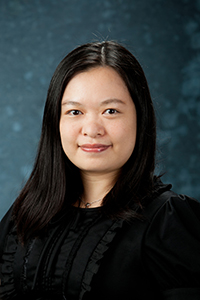 Rosanna Yuen-Yan Chan joined the IEEE as a student member in late 1990s. She is now an IEEE Senior Member and a Member-at-large of the Board of Governors of the IEEE Education Society. Rosanna founded the IEEE Education Society Hong Kong Chapter and the IEEE Education Society Technical Committee on Learning Sciences in 2006 and 2013, respectively. Rosanna is currently a full-time Senior Research Scientist at Centre of Perceptual and Interactive Intelligence (CPII) and an adjunct assistant professor in Department of Information Engineering, the Chinese University of Hong Kong. She has a dual-disciplinary research background between Information Engineering and Learning Science. She has published widely in top-tier journals and conferences including Proceedings of the IEEE, IEEE Systems Journal, IEEE GLOBECOM, and ACM CHI. Rosanna has taken a significant role in a number of large-scale systems of societal importance. Her cross-continental cross-disciplinary research collaborative community come from diverse domains that span across Physics, Biology, Neuroscience, Medicine, Sport Science, Speech Therapy, Special Education and more.
Rosanna Yuen-Yan Chan joined the IEEE as a student member in late 1990s. She is now an IEEE Senior Member and a Member-at-large of the Board of Governors of the IEEE Education Society. Rosanna founded the IEEE Education Society Hong Kong Chapter and the IEEE Education Society Technical Committee on Learning Sciences in 2006 and 2013, respectively. Rosanna is currently a full-time Senior Research Scientist at Centre of Perceptual and Interactive Intelligence (CPII) and an adjunct assistant professor in Department of Information Engineering, the Chinese University of Hong Kong. She has a dual-disciplinary research background between Information Engineering and Learning Science. She has published widely in top-tier journals and conferences including Proceedings of the IEEE, IEEE Systems Journal, IEEE GLOBECOM, and ACM CHI. Rosanna has taken a significant role in a number of large-scale systems of societal importance. Her cross-continental cross-disciplinary research collaborative community come from diverse domains that span across Physics, Biology, Neuroscience, Medicine, Sport Science, Speech Therapy, Special Education and more.
Title: Next-Generation Internet of Intelligent Things (IIoT) for People with Cognitive and Learning Disabilities
Abstract: The Internet of Things (IoT) is always physically and socially relevant. Moreover, IoT systems of societal significance must be designed with a future communications generation in mind. While 5G cellular networks have just become viable nowadays, interdisciplinary academic studies of 6G wireless communication technologies are already been in place. It is time to pioneer research efforts on novel 6G applications, and pave the very last mile of telecommunication to every end user in the future inclusive cyber-physical society.
People with cognitive and learning disabilities (such as those with dementia, developmental disabilities, or those in acute medical conditions) face diverse challenges when using today’s technology. Meanwhile, a growing number of proposed killer applications in 6G are designed for human augmentation; examples include holographic avatars and tactile Internet. Therefore, the yet to arrive 6G-empowered IIoT era is promising for users currently having severe biological and physical limitations.
In this talk, Rosanna Yuen-Yan Chan (Founding Co-Chair of IEEE Technical Committee on Learning Sciences and Board of Governors Member-at-large of the IEEE Education Society) will provide the theoretical background covering human cognition and learning, context-aware computing, and human-information interaction; and explicate various typical and atypical cognitive needs across different phrases of the human life span. A brief overview of next-generation human-centric services such as extended reality (XR – including virtual/augmented/mixed reality ), embodied AI, and intelligent nearables will also be provided. Lastly, Chan will share her vision on next-generation IIoT for Special Education Needs (SEN). She will also report the early success of a prototypical multi-organizations system-of-systems and a few preliminary research findings obtained by a cross-disciplinary professional community of practice in Hong Kong.
Talk # 1 – Designing Pervasive Gaming Experiences with Voice Assistants for Seniors
Carina Soledad González-González, University of La Laguna, Spain
 Carina González is a Full Professor of Computer Architecture Technology at the Department of Computer Engineering and Systems of the University of La Laguna (Spain). Carina is a Ph.D. in Computer Science (2001) by the University of La Laguna and a Ph.D. in Social Science and Education (2020) by the University of Huelva (Spain). Bachelor in Computer Science (1995) by the National University of Northeast (Argentina), certified as Computer Engineering by the Spanish Ministry of Education (1999). She is also certified in “Early Childhood Technology” by the Tufts University (USA) (2018) and in Human-Computer Interaction by the Massachusetts Institute of Technology (USA) (2020). She is the head of the research group Interaction, ICT, and Education (ITED) (Ref. 82937-2009). Carina is Chair of the Digital Culture of the University of La Laguna. She has been Director of Innovation and Educational Technology (2011; 2015-2019). She is President of the Academic Association Red Universitaria de Campus Virtuales formed by researchers and teachers of Spanish and Latin American universities. She is member of the boards of AIPO (Asociación Interacción Persona-Ordenador) and ADIE (Asociación para el Desarrollo de la Informática Educativa). For more than 20 years, her research has focused on the field of Informatics applied to Education and Human-Computer Interaction (Intelligent Tutorial Systems, Adaptive and Customizable Interfaces, Educational Video Games, Gamification in Education, e-learning, digital culture), participating in different research projects and publishing widely on these topics.
Carina González is a Full Professor of Computer Architecture Technology at the Department of Computer Engineering and Systems of the University of La Laguna (Spain). Carina is a Ph.D. in Computer Science (2001) by the University of La Laguna and a Ph.D. in Social Science and Education (2020) by the University of Huelva (Spain). Bachelor in Computer Science (1995) by the National University of Northeast (Argentina), certified as Computer Engineering by the Spanish Ministry of Education (1999). She is also certified in “Early Childhood Technology” by the Tufts University (USA) (2018) and in Human-Computer Interaction by the Massachusetts Institute of Technology (USA) (2020). She is the head of the research group Interaction, ICT, and Education (ITED) (Ref. 82937-2009). Carina is Chair of the Digital Culture of the University of La Laguna. She has been Director of Innovation and Educational Technology (2011; 2015-2019). She is President of the Academic Association Red Universitaria de Campus Virtuales formed by researchers and teachers of Spanish and Latin American universities. She is member of the boards of AIPO (Asociación Interacción Persona-Ordenador) and ADIE (Asociación para el Desarrollo de la Informática Educativa). For more than 20 years, her research has focused on the field of Informatics applied to Education and Human-Computer Interaction (Intelligent Tutorial Systems, Adaptive and Customizable Interfaces, Educational Video Games, Gamification in Education, e-learning, digital culture), participating in different research projects and publishing widely on these topics.
Abstract: Seniors represent a growing proportion of the world population. Between 2000 and 2050, the proportion of the world’s population over 60 years will double from about 11% to 22%. In our occidental societies, older adults often suffer from social and emotional isolation, and from ageism. In line with other transformations produced by the networked society and by the incorporation of ICTs into the field of digital entertainment, there is a need to re-design the entertainment systems for the older adults, incorporating the population of this age group into the digital culture, and promoting their active aging. This talk focuses on the design of pervasive gaming experiences for all, in particular using voice assistants. The inclusion of older adults opens the door to the consideration of questions such as technology acceptance and personalization to take into account their diverse cognitive and physical abilities or even the way they interact with each other. Gender and ethical considerations become relevant and also, user experience evaluation and the application of co-creation techniques in designing gaming experiences.
Talk # 2 – IoT-Enhanced AAC on Severe Intellectual Disabilities
Jason Lam, Caritas Lok Kan School, Hong Kong SAR
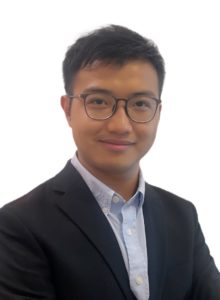 Jason Lam has an interdisciplinary background between psychology and speech therapy. He graduated from the City University of Hong Kong with Bachelor of Social Sciences (Honours) in Psychology. Later on, he obtained his Master of Science degree in Educational Speech-Language Pathology and Learning Disabilities from the Education University of Hong Kong. Jason is currently a full-time speech therapist at Caritas Lok Kan School, Hong Kong; where he offers speech therapy services to students having severe intellectual disabilities. Jason is keen on applying internet of things (IoT) to augment users having severe limitations physically and/or mentally. His creative design ideas are inspired by his practical knowledge gained from the frontier work experience.
Jason Lam has an interdisciplinary background between psychology and speech therapy. He graduated from the City University of Hong Kong with Bachelor of Social Sciences (Honours) in Psychology. Later on, he obtained his Master of Science degree in Educational Speech-Language Pathology and Learning Disabilities from the Education University of Hong Kong. Jason is currently a full-time speech therapist at Caritas Lok Kan School, Hong Kong; where he offers speech therapy services to students having severe intellectual disabilities. Jason is keen on applying internet of things (IoT) to augment users having severe limitations physically and/or mentally. His creative design ideas are inspired by his practical knowledge gained from the frontier work experience.
Abstract: The prevalence of intellectual disability (ID) ranged from 1-3% globally. Severe to profound intellectual disability contributed to 6% of the ID population. There were disproportionately few research studies ever done on them. Severe to profound intellectual disability often accompanied with multiple disabilities including physical impairments, language impairments. Caregivers of this population are vulnerable to depression, anxiety and stress symptoms. They may also have feelings of grief and loss. By clinical observation, one of the biggest challenges the caregivers faced is to communicate with them. Traditionally, augmentative and alternative communication (AAC) were used to aid communication. AAC refers to any means of communicating ideas and feelings without using verbal language. It included unaided and aided systems. Unaided systems use one’s body for communication, such as facial expression. It could be difficult to use for this population due to their physical impairment. Aided systems use tools for communication. Thanks to recent technology advancement. High-tech aided systems appeared on the market. However, not all individuals with severe to profound intellectual disability could benefit from it. This sharing would explore the relevant factors that block them from using it as well as explore the potential use of “internet of things” (IoT) to tackle those factors and facilitate communication.
Talk # 3 – Internet of Things-Enhanced Social Robots for Dyslexia Therapy
Jeff S.L. Cheng, Founder of PopSand Robotics Co. Ltd.
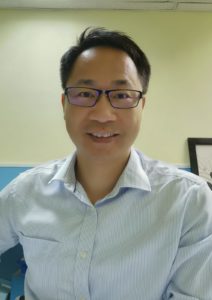 Jeff Cheng graduated from the Chinese University of Hong Kong (CUHK). He was found of software design and development since he was a secondary school student. Jeff obtained his PhD in Information Engineering and was specialized in Coding. In 2018, Jeff established PopSand Robotics, and launched Talkbo – an educational robot with intelligent teaching functions that can process incomplete English words and sentences. Jeff further collaborates with researchers from the special education and neurolinguistics domains, and applies internet of things to enhance social robotics for special education needs. Jeff enrolled to the Department of Information Engineering, CUHK under the early admission scheme, a scheme offered to Hong Kong secondary school students who were able to score 6 As or above in the Hong Kong Certificate of Education Examination.
Jeff Cheng graduated from the Chinese University of Hong Kong (CUHK). He was found of software design and development since he was a secondary school student. Jeff obtained his PhD in Information Engineering and was specialized in Coding. In 2018, Jeff established PopSand Robotics, and launched Talkbo – an educational robot with intelligent teaching functions that can process incomplete English words and sentences. Jeff further collaborates with researchers from the special education and neurolinguistics domains, and applies internet of things to enhance social robotics for special education needs. Jeff enrolled to the Department of Information Engineering, CUHK under the early admission scheme, a scheme offered to Hong Kong secondary school students who were able to score 6 As or above in the Hong Kong Certificate of Education Examination.
Abstract: Dyslexia is also known as reading disorder. It is a learning disability characterized by the difficulty in reading. Specifically, dyslexic users have difficulty in spelling, writing, and pronouncing words. A number of educational technologies have been developed to cater for this learning disability, including the use of social robots. In this talk, the speaker will discuss how Internet of Things (IoT) can be applied and integrated to social robots to provide multimodal dyslexia therapy for students having special education needs. In particular, early findings obtained from a user study performed at a special school in Hong Kong will also be presented.
Talk # 4 – IoT Education through Remote Laboratories
Sergio Martin, Universidad Nacional de Educación a Distancia (UNED), Spain
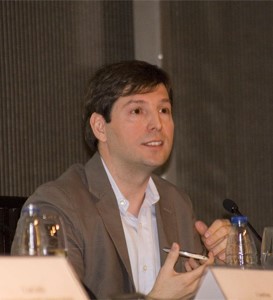 Sergio Martin (Associate Professor) works at UNED (National University for Distance Education, Spain). He received a Ph.D. from the Electrical and Computer Engineering Department of the Industrial Engineering School of UNED. He is a computer engineer in distributed applications and systems at the Carlos III University of Madrid. He has taught subjects related to microelectronics and digital electronics since 2007 in the Industrial Engineering School of UNED.
Sergio Martin (Associate Professor) works at UNED (National University for Distance Education, Spain). He received a Ph.D. from the Electrical and Computer Engineering Department of the Industrial Engineering School of UNED. He is a computer engineer in distributed applications and systems at the Carlos III University of Madrid. He has taught subjects related to microelectronics and digital electronics since 2007 in the Industrial Engineering School of UNED.
He has participated since 2002 in national and international research projects related to mobile devices, ubiquitous computing and the Internet of Things as well as in projects related to “e-learning”, virtual and remote labs and new technologies applied to distance education.
He has published more than 200 papers both in international journals/conferences and received more than 25 awards during his career. He has published several books, including one in 2021 about IoT teaching and learning. He has organized several international conferences and has served as associate/guest editor of several JCR journals.
Abstract: One of the most challenging issues in special education is how to facilitate Science, Engineering, Technology and Mathematics (STEM) experimental activities in technical fields. Laboratory practice is essential in STEM disciplines to help students assimilate correctly the theory concepts and can acquire the practical skills to be used in their professional career once their degree is finished. Traditionally, on-campus education provides hand-on practice sessions where students can physically conduct experimentation with technical equipment once a week. However, students with physical, psychic or sensory disability, or serious conduct disorder may find problematic to attend to a physical laboratory to conduct such practices.
One potential solution to this problem can be found in the use of virtual and remote laboratories. The use of these on-line labs in engineering education is becoming more and more important everyday because of the need of providing flexible, scalable and high quality access to acquire practical competences with real instrumentation at anytime and anyplace, not only within a classroom. This presentation will introduce some remote laboratories to facilitate IoT learning at University level. They will help students to acquire technical skills related to electronics, communications and computer science without having to attend an on-campus laboratory.
Talk # 5 – Developing the Integrated Intelligent Intervention-learning system (3i-learning system) for students with Special Educational Needs (SEN)
Victor Wong, CEO, Bridge AI, Hong Kong S.A.R., China
 Victor Wong has strong passion in education. He founded Bridge Academy in 2014, a school that provides Applied Behavior Analysis (ABA) services for children of aged 2 and above with learning difficulties. More than 300 special education needs (SEN) students had received ABA services involving 10,000 learning tasks at Bridge Academy since 2014. Victor has also founded Bridge AI, a company using Artificial Intelligence (AI), big data and video and audio communication systems to support e-learning of SEN children. He is now collaborating with Hong Kong Applied Science and Technology Research Institute (ASTRI) in a project funded by the Hong Kong Innovative and Technology Bureau (ITB) to develop a distance learning education system that tailors the individual needs of the SEN students.
Victor Wong has strong passion in education. He founded Bridge Academy in 2014, a school that provides Applied Behavior Analysis (ABA) services for children of aged 2 and above with learning difficulties. More than 300 special education needs (SEN) students had received ABA services involving 10,000 learning tasks at Bridge Academy since 2014. Victor has also founded Bridge AI, a company using Artificial Intelligence (AI), big data and video and audio communication systems to support e-learning of SEN children. He is now collaborating with Hong Kong Applied Science and Technology Research Institute (ASTRI) in a project funded by the Hong Kong Innovative and Technology Bureau (ITB) to develop a distance learning education system that tailors the individual needs of the SEN students.
Abstract: While the number of Special Education Needs (SEN) students in Hong Kong is constantly growing, support and therapy for SEN students have always been scarce. Meanwhile, behavioral therapy, such as Applied Behavior Analysis (ABA) Therapy, is not as common of an option for therapy in Hong Kong as in other parts of the world, such as the United States. In this talk, the speaker will present the Integrated Intelligent Intervention-learning system (3i-learning system). The system aims to train up parents and caregivers to become therapists of their children. Through integrating Artificial Intelligence (AI) and Internet of Things (IoTs) measurements into the 3i-learning system, users will be provided with an extensive view of the progress of therapy for each child via measurements of task performances, as well as environmental and physiological factors that affect the child’s learning. The 3i-learning system is also capable of assisting users in creating plans for therapy to maximize progress and development with the help of the system AI engine. The cost of therapy can be brought down significantly while allowing SEN children to be engaged in intensive ABA therapy. On the other hand, parents and caregivers will be better equipped to interact and foster their children, giving them a consistent environment to learn and develop. Through working with potential users and collaborating with schools and Non-Governmental Organizations (NGOs), the 3i-learning system will bring quality behavioral therapy to families with SEN children, especially those underprivileged ones, and ultimately promote a harmonious society which welcomes SEN children.
Anthony Ng Kei Hin, AIphotonics Limited
 Anthony Ng obtained his Bachelor of Engineering degree in Mechanical Engineering from the Hong Kong University of Science and Technology. After graduation, he joined AIphotonics Limited as a mechanical engineer. Anthony’s professional experience includes IoT system integration, modification, and customization. His expertise in sensor interface integration and calibration is vital to the development of IoT systems. He has also developed an all-in-one general-purpose LIDAR and provided many LiDAR-based solutions. He has acquired extensive experience in a range of IoT sensors and commercially available LIDARs. Anthony is also an expert in mechatronics and incorporating Inertial Measurement Units (IMU) in advanced LIDAR and sensor systems.
Anthony Ng obtained his Bachelor of Engineering degree in Mechanical Engineering from the Hong Kong University of Science and Technology. After graduation, he joined AIphotonics Limited as a mechanical engineer. Anthony’s professional experience includes IoT system integration, modification, and customization. His expertise in sensor interface integration and calibration is vital to the development of IoT systems. He has also developed an all-in-one general-purpose LIDAR and provided many LiDAR-based solutions. He has acquired extensive experience in a range of IoT sensors and commercially available LIDARs. Anthony is also an expert in mechatronics and incorporating Inertial Measurement Units (IMU) in advanced LIDAR and sensor systems.
Gary Lam Wang Kong, AIphotonics Limited and Chinese University of Hong Kong
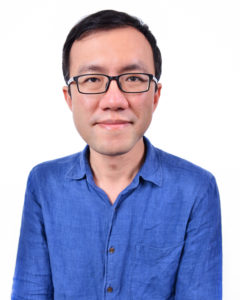 Equipped with a PhD Degree in Electronic Engineering from the Chinese University of Hong Kong, Gary started his career as a Postdoctoral Fellow in university. He worked on the research of an online Augmentative and Alternative Communication (AAC) app, using social connectivism theories and technologies to help patients of dyslexia to communicate effectively.
Equipped with a PhD Degree in Electronic Engineering from the Chinese University of Hong Kong, Gary started his career as a Postdoctoral Fellow in university. He worked on the research of an online Augmentative and Alternative Communication (AAC) app, using social connectivism theories and technologies to help patients of dyslexia to communicate effectively.
Gary is currently working in AIphotonics Limited as a Computer Vision Engineer. He works on various areas including point cloud data analysis, LiDAR system development and machine learning. He also develops IoT systems and integrates image capturing systems. In addition, he is recently affiliated with the Centre of Perceptual and Interactive Intelligence (CPII) for researching technologies to help people with special communication needs.
Abstract: Environmental factors are important to both the physical and emotional well-being of students with Special Education Needs (SEN). These students comprise 7.8% of the population in Hong Kong. Studies and reports show that they may be more sensitive to acoustics, lighting, temperature and ventilation of their surrounding environment. These parameters are the key considerations and criteria to evaluate the learning environment of students with SEN. In Hong Kong, their caregivers and teachers are struggling to evaluate the impact of these environmental parameters quantitatively, so as to build the optimal learning environment for these students.
To address this evaluation need, there is a demand to design an IoT system to collect environmental data and study their impact on these students. This presentation discusses some of the criteria to evaluate the learning environment of students with SEN. It introduces the design of an IoT system framework for environmental data collection, and how this IoT system is deployed by caregivers and teachers.



